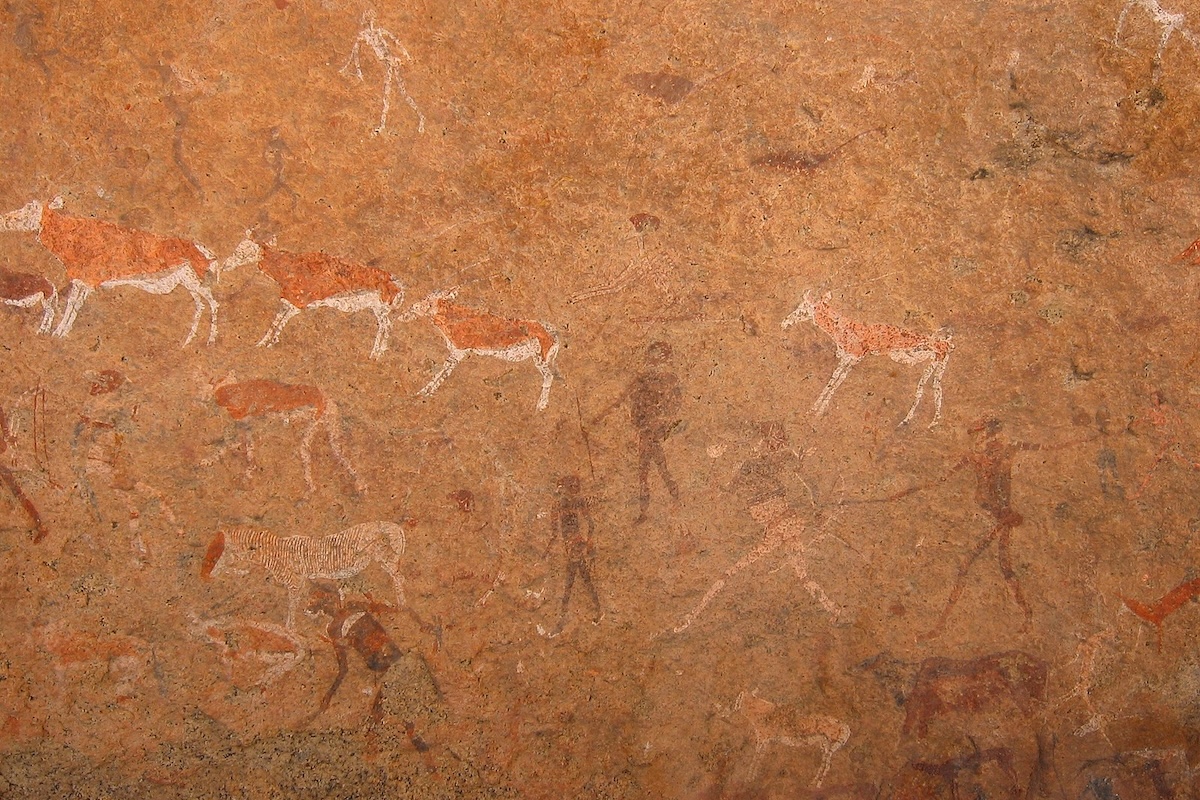
Exploring the Prehistoric Rock Art of Namibia’s Brandberg Mountain
By: Mike Coleman
Skip to Section
The highest mountain in Namibia, Brandberg Mountain’s rugged peak towers above the arid landscape and can be seen from great distances. But it’s not just the mountain that’s so intriguing: here, you’ll find ancient art left behind by the San people, offering a window into their lives and beliefs. For centuries, the San lived in this harsh terrain, and they left their mark through the paintings and engravings scattered across the mountain’s rock faces.
Brandberg Mountain is a UNESCO World Heritage site, recognized for its unique rock formations and the wealth of ancient art that covers its surfaces. While the mountain itself is impressive, with its peaks and rugged terrain, what makes it extra special is the art. The San people used this mountain as a canvas, leaving behind images that tell their stories. They hunted and gathered in this region, and their art reflects the animals they relied on, their rituals, and their deep connection to the land. From human figures to animals like antelopes and zebras, the art paints a vivid picture of life in the desert long before modern times.

Photo by Rico Meier on Unsplash
The rock art on Brandberg Mountain is some of the best-preserved prehistoric art in the world. It includes detailed paintings and engravings that show a range of subjects—there are scenes of hunting, animals, and abstract designs that leave room for interpretation. These images have been around for thousands of years, and they still tell the story of the people who made them.
What the San people wanted to convey with these images is still open to interpretation. Scholars have spent years trying to piece together what the art means. Some believe the art was tied to the spiritual practices of the San, perhaps used in rituals or as a way to connect with the natural world. Others think it might have been a way to pass down stories from one generation to the next. The truth may never be fully known, but that’s part of what makes it so intriguing.
The White Lady of Brandberg Mountain is one of the most famous and debated rock art paintings in Namibia. Discovered in 1918, this striking figure, painted on the walls of a cave, has intrigued archaeologists and historians for decades. Despite the name, the figure isn’t necessarily a woman, nor is it entirely clear who or what it represents. Some scholars initially thought it resembled ancient Mediterranean figures, suggesting outside influence, but most experts now agree it’s the work of the San people, likely tied to their spiritual or ceremonial practices. The White Lady, with its detailed depiction of a human figure surrounded by animals, remains a focal point for understanding the cultural and artistic legacy of the San in this region.
Beyond the art itself, Brandberg Mountain serves as a cultural marker. This mountain was a place of shelter, sustenance, and spiritual significance. The desert-adapted elephants and mountain zebras that roam the region today are a living link to the animals that would have been important to the San centuries ago. The natural world that surrounds the mountain hasn’t changed much since the time these paintings were made, and that connection to the past is palpable when you visit.
Today, people from all over the world visit Brandberg Mountain to see the art for themselves. It’s a journey worth taking as a reminder that even in a remote corner of the world, human beings have been creating, storytelling, and leaving their mark for thousands of years.
About the Author
Mike is a writer who researches and shares actionable advice around travel lifestyle, finance, and personal growth. He loves any trip where he can explore the great outdoors, and believes everyone should be able to experience travel for personal development and fulfillment. Read his other articles on Frayed Passport here.Featured image by Harald Süpfle on Wikimedia Commons.
Information published on this website and across our networks can change over time. Stories and recommendations reflect the subjective opinions of our writers. You should consult multiple sources to ensure you have the most current, safe, and correct details for your own research and plans.
Frayed Passport is a participant in the Amazon Associates Program, an affiliate advertising program designed to provide a means for sites to earn advertising fees by advertising and linking to Amazon.com. We also may share links to other affiliates and sponsors in articles across our website.




